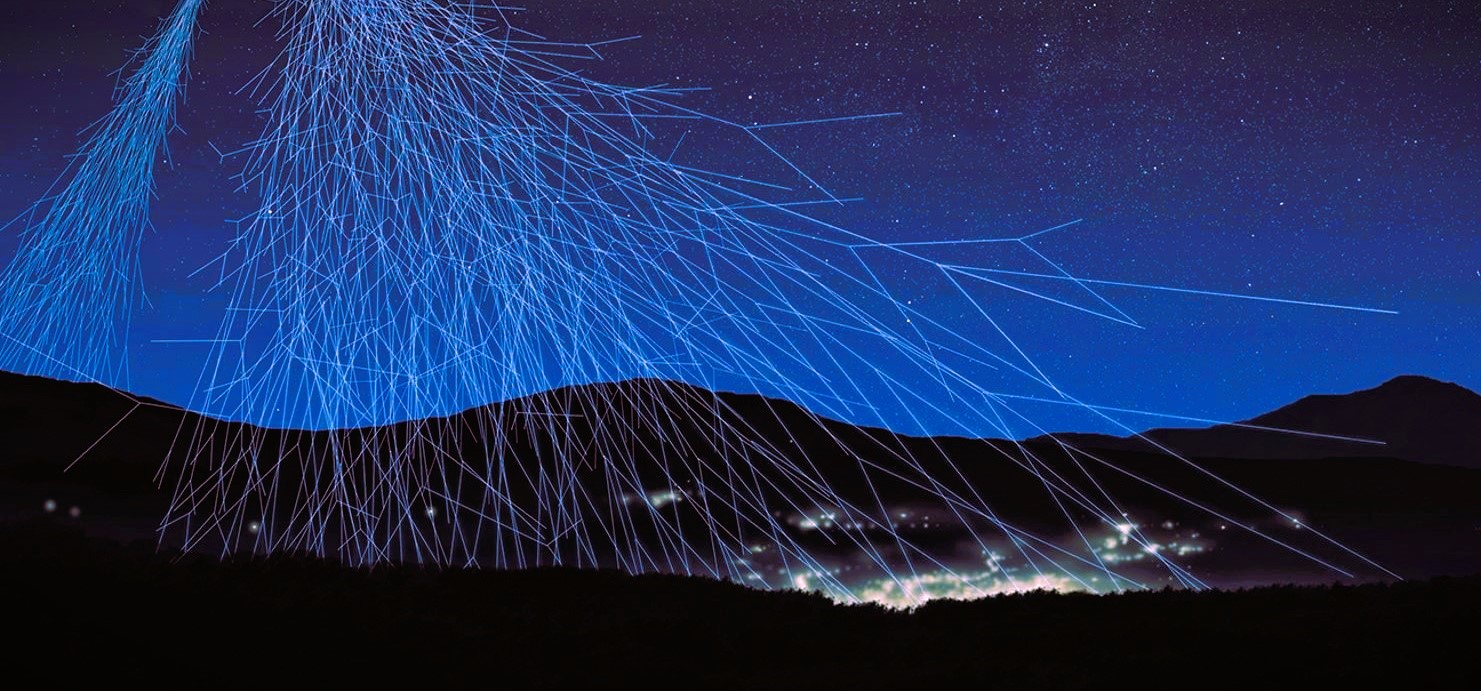The LIP detector laboratory is in an underground floor of the Faculty of Sciences. It is there that new instruments for detection of radiation and particles are developed.
It was where the main muon telescope of the LouMu project – the CorePix – was optimized, before being installed at the Lousal Mine.
“CorePix” muon telescope at Coimbra
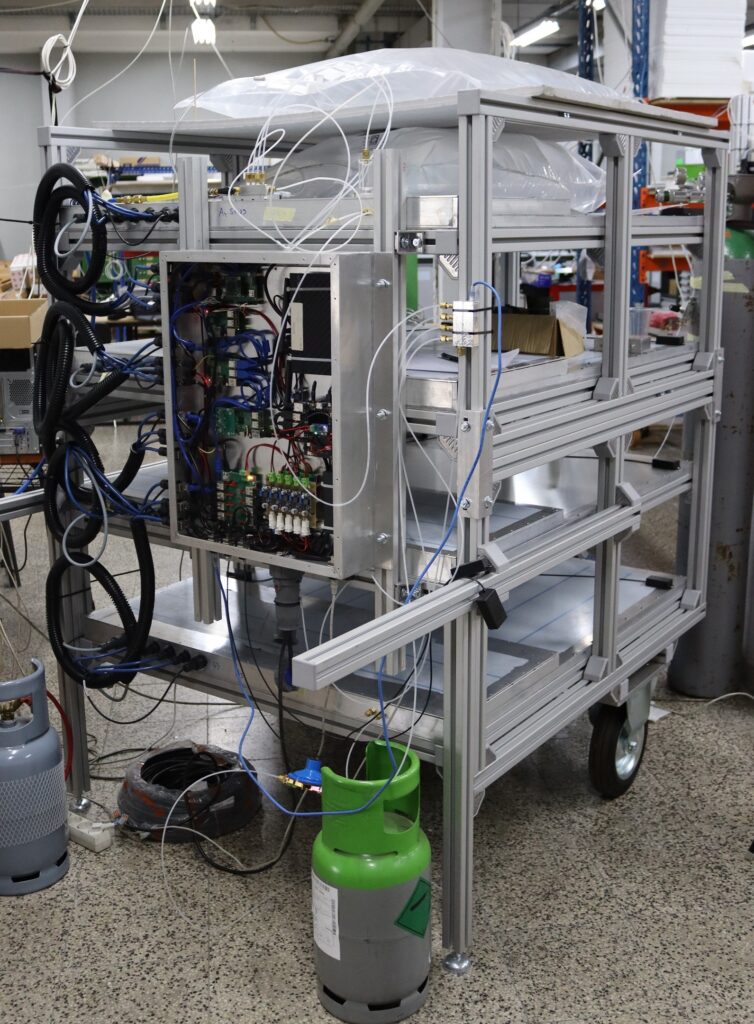
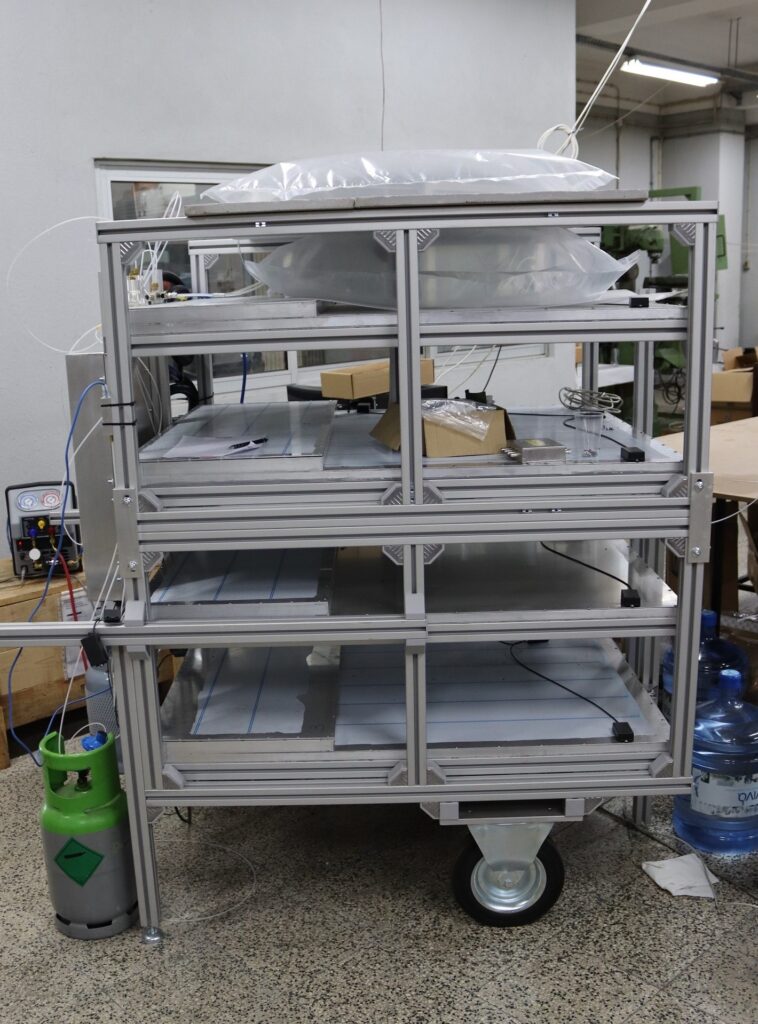
The CorePix muon telescope was constructed and mounted in the the LIP laboratory in Coimbra and consists of 4 planes where the passage of muons is detected. These planes are Resistive Plate Chambers. The efficiency and uniformity of each plane is also calibrated in the detector laboratory.


Each plane has dimensions of 1 m x 1 m and the distance between them can be changed, being typically of 33.5 cm. The top RPC plane is composed of 64 detection pads, organized in columns, and is mainly used to confirm the detections. The other three RPCs have also 64 pads, but with different shapes. The central area of these three planes is formed by 7×7 pads of 4 cm side, and inspire the name CorePix: they provide observations with high resolution.
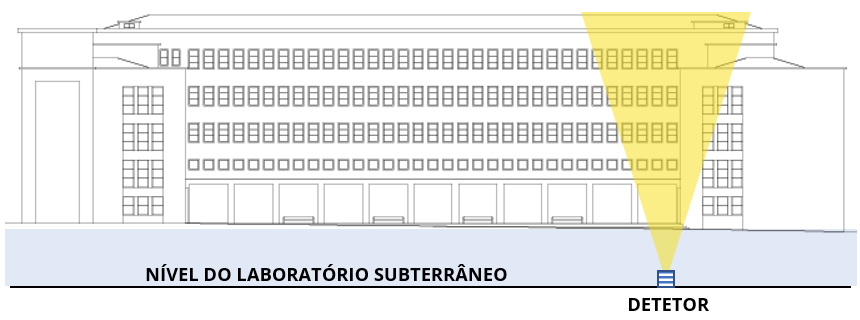
The detector laboratory is located under the entrance of the Physics Department of the Coimbra University. During the optimization of the telescope, muographies were created from different positions from the underground level of the laboratory, that can be confronted against the known structures of the building.
A muography is an image that is obtained by the muon telescope counting the number of muons detected from each direction inside the viewing angle of the observation area. The area observed is the project of a square pyramid, with the vertex at the center of the detector (represented by the yellow triangle in the image of the façade of the building). The resolution of the muography, ie the level of detail that can be seen, depends on the size of the detection pads on the RPCs and on the vertical distance between the detection planes.

In September 2020, the telescope was positioned just under the entrance of the Physics Department. The obtained muography shows a large area in brown color in which many muons were detected, that corresponds to an open sky area, outside the building. The yellow regions, on the top right, corresponds to an observation area which encompasses four top floors of the building and so less muons arrive from these directions. The color scale shows the number of muon divided by a reference observation, from a position inside the laboratory that is more uniformly covered by the full building.
This is the foundation of the muographic survey. The more matter or higher density materials that are in a line of sight from the detector, the less muons will be detected in this direction. This is because muons loose energy by interacting with dense matter and there are fewer muons that have energies large enough to be able to reach the detector. This is what allows different materials to be separated in the image.
At the entrance of the department there are no upper floors, except for the roof: the space is occupied by a large Foucault pendulum, suspended from the top. This can be noted in the muography shown above, at the bottom right corner, an area with higher muon counts, identified as the building entrance.
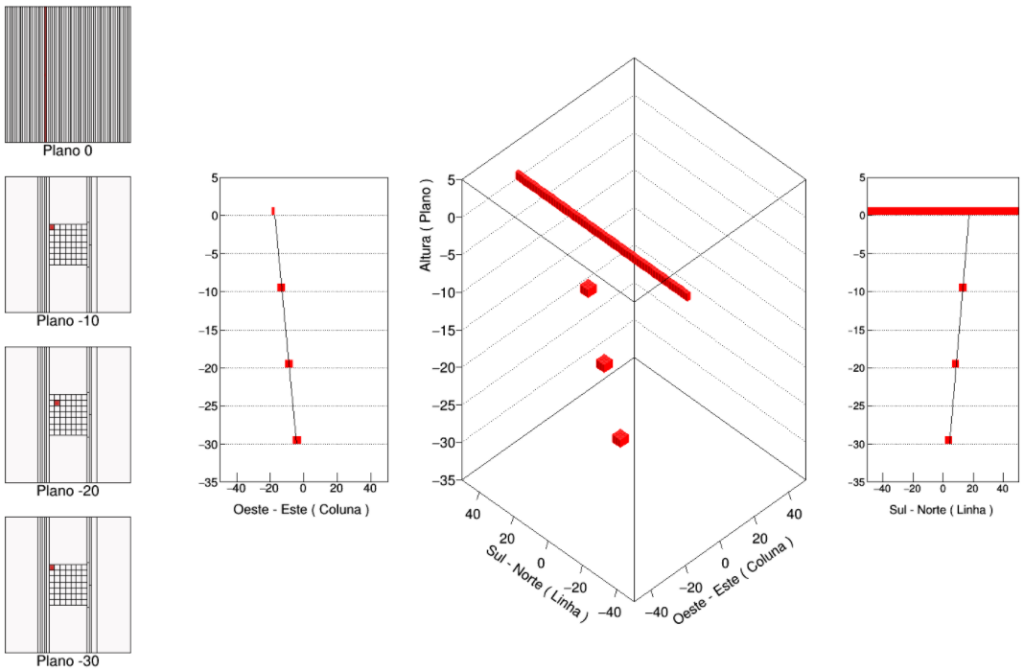
Inside each RPC a gas is ionized by the passing muon, producing an electric signal that is registered in each pad. The muon is identified by simultaneous signals is the several planes. Muons travel in straight lines that are reconstructed from the pads that register the highest charge in each plane.
A small database is available for visualizing muons detected in different observation periods.
To explore, visit | MUON DETECTION IN THE RPCS OF THE COREPIX |
